So you’ve heard about SEO, but you’re not exactly sure what it means. Or maybe you are not sure how it can help you achieve your goals.
SEO is a major marketing task for any website.
And if you are new to it, it can seem daunting. To get the most benefit from SEO, it is important to understand what it is, how it works, and why it can help you.
So…
What Does “SEO” Stand For?
SEO stands for Search Engine Optimization.
It’s a hotly debated topic and there is LOTS of content written about it online:

Let’s explore it in a bit more detail:
What Is SEO?
SEO is the process of improving your website so that it ranks higher in search engine results for certain keywords. Typically people focus on appearing in Google, but there is also Bing.
It is all about getting users to visit your site without directly paying for advertising. Oh, and it’s a discipline of marketing that absolutely loves acronyms:
- SERP – search engine results page
- CTR – click-through rate
- CTA – call to action
- CRO – conversion rate optimization
- UX – user experience
What "SEO" Means In a Nutshell:
SEO is short for Search Engine Optimization. It refers to a set of strategies and tactics that focus on driving more traffic from Search Engines to your pages along with improvements that help your website rank higher in Search Engine Result Pages.
Why Should You Care About SEO (Hint: Free Traffic to Your Site)
Research shows that websites on the first page of Google receive the majority of clicks. The number of people clicking a website (CTR) in Google steadily decreased the further down the page they rank.
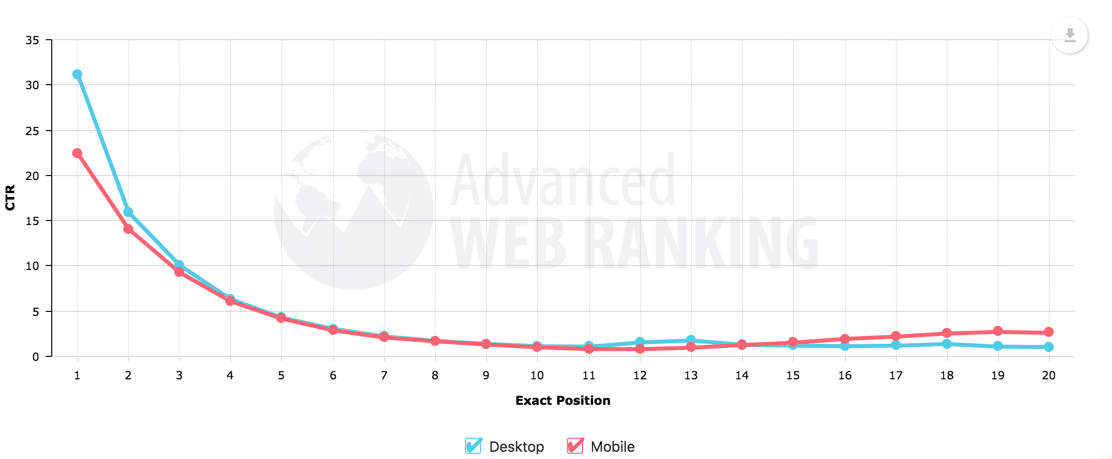
If you get your SEO right (we’ll see that in a minute), your organic traffic can build over time, whereas paid advertising needs ongoing funding.
And considering that search engines drive 93% of all website traffic, that’s a lot of potential visits to your site.
Every day Google is getting smarter and more advanced. But it still needs some help.
Understanding SEO and optimizing your site will help you give search engines the information they need, so you can get the results you want.
What’s the Catch?
As the search engines become more advanced and algorithms change, some tactics stop working and new ones emerge.
But one thing remains: SEO is one of the best sources of long term traffic. It can be hard work and you may not see much benefit overnight, but it is an investment.
SEO is a marathon, not a sprint. Some work upfront can pay off in organic traffic later down the line.
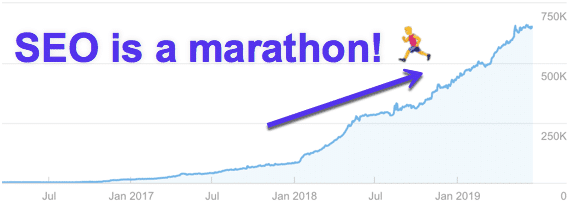
While paid advertising, social media, and other paid channels can get traffic to your site instantly if you stop paying the traffic also stops. SEO, on the other hand, can be an ongoing source of traffic.
Search Engine Basics (And How to Think About SEO)
Search engines are designed to find information and provide answers.
When it comes to how it approaches search, Google looks at millions of web pages to come up with the most relevant information for users.
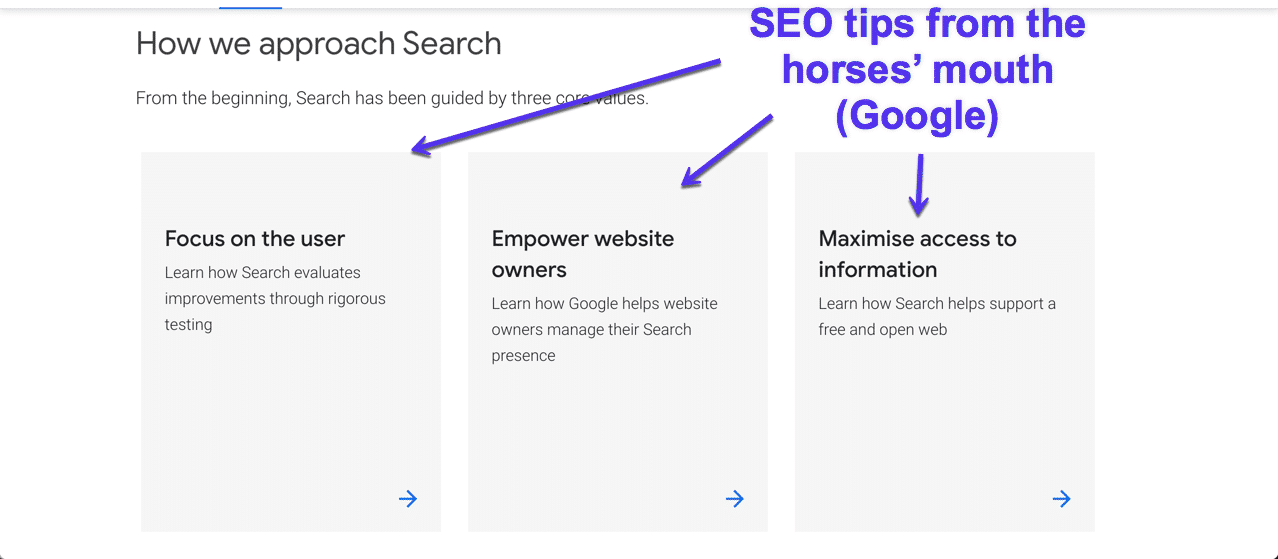
How to Think About SEO
Knowing that Google wants to provide the best answers to a user’s query, there are three rules we can keep in mind when tackling SEO:
- Rule 1: Google is for answering people’s questions.
- Rule 2: Google knows more than us and SEO experts.
- Rule 3: Google wants answers not ranking tricks.
So what do you need to do to get your ranking site?
Answer questions better than anyone else on the Internet. Try not to overcomplicate things. And don’t try to trick Google with often short-term tactics.
See, SEO is kind of simple. :)
7 SEO Fundamentals for Beginners
Hopefully, you are starting to see now that SEO isn’t that complicated.
In fact, it’s pretty simple. Well, at least the basics are.
Getting a few SEO fundamentals in place can make a BIG difference to your site’s ranking. After all, most people who run sites are not SEO experts.
By just getting a few things right, you’ll be on your way to getting Google to send you traffic in a short amount of time.
Sound good? Let’s go.
1. Use a Search Engine Friendly CMS (Like WordPress)
First and foremost, if your site isn’t crawlable by Google, it won’t get indexed and it won’t rank.
What does that mean exactly?
Google uses automated crawlers (or bots) to find websites, index the content, and rank them. So if your site is not accessible to these crawlers, your website will not find it’s way into the index.
If your site is not indexed, it means Google is not going to rank your site. And if you want Google to crawl and index your site (and why wouldn’t you), there are a few things you need to set up from the get-go.
Enter: technical SEO.
Don’t be put off by this. Technical SEO is all about making sure your site loads properly and is visible to Google. Technical requirements do change, but the need to keep your website accessible to Google’s crawlers will always remain.
Using WordPress as your CMS is like giving yourself a head start when it comes to creating a search engine friendly website. There are a few SEO plugins that do the heavy lifting for you, so you don’t need to worry about breaking anything.
Here are some essential things you can do in WordPress to help your site get crawled and indexed:
Create an XML Sitemap
An XML sitemap is a file that lists all the pages on your website and looks like this:
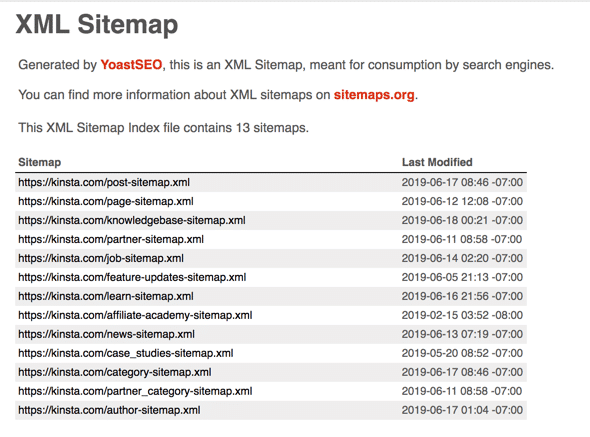
Your sitemap is usually located at yourdomain.com/sitemap.xml.
If you are using a plugin like Yoast (like in the example above), creating a sitemap is simple.
Install the Yoast SEO plugin. Go to General and then, in the tab at the top select Features. From here, you’ll be able to turn XML sitemaps on and save the changes.
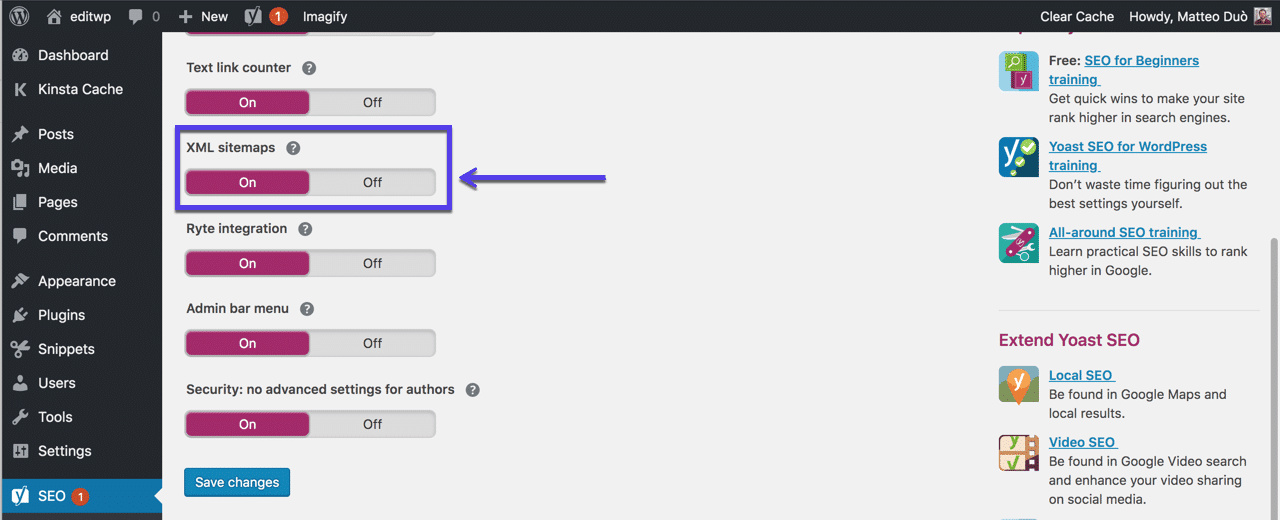
Now you just want to submit this sitemap to Google Search Console. If you haven’t already set up and verified it, this guide tells you how to do it.
Generate a Robots.txt File
Robots.txt is a text file that tells search engines where they can and can’t go within your site. It will look something along the lines of this:
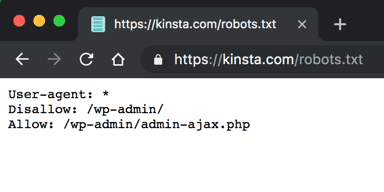
Just like the sitemap, the Yoast plugin can generate you a robots.txt file.
In the Yoast plugin, head over to Tools > File editor and you’ll see a button to “Create a robots.txt file.”
Although only a simple text file, not setting it up correctly can seriously mess with your site’s indexing. It’s therefore worth giving this WordPress robots.txt guide a read.
Untick “Discourage Search Engines” Settings
This is a simple one, but can really work against your SEO efforts. It’s just a simple tick box that discourages search engines from indexing your site.
This is generally used when a site is in development to prevent it from showing up in Google before it is finished. To find this, go to Settings > Reading and scroll down and you’ll see it:
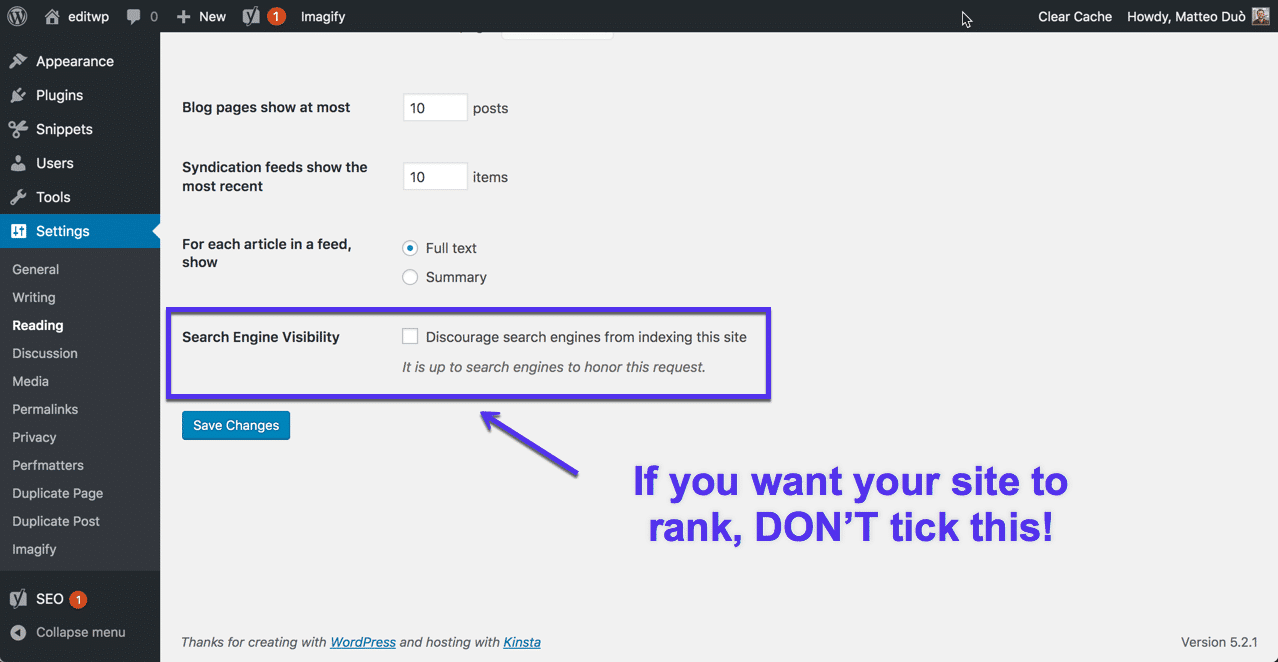
2. Make Sure Your Site Works on Mobile (Aka Responsive Design)
Way back in November 2016, Google announced its mobile-first index. This basically means that Google will look at how your website appears on mobile first, before indexing and ranking it.
It’s harder to think of someone who doesn’t have a smartphone than who does. So it should come as no shock to learn that over 51% of mobile users have found a new company or product while searching on their mobile.
According to this study, 52.2% of all website traffic worldwide was generated through mobile phones in 2018:
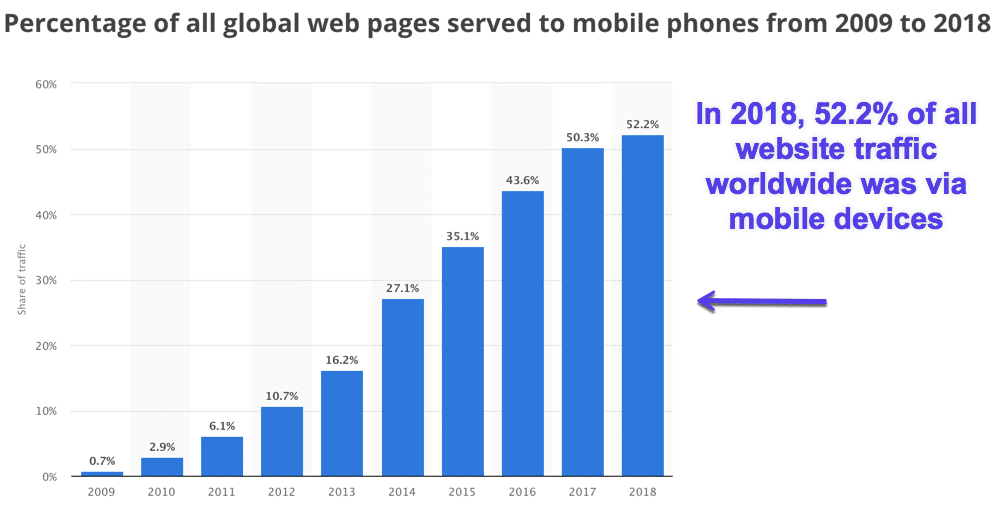
It has also steadily increased every year since 2009. What’s more, according to Google, there are a whopping 27.8 billion more queries done on mobile vs desktop.
Still need convincing? Here are some more reasons why you need a website that works on mobile:
- Site usability — You want people to be able to move around your site. And so does Google. Responsive web design lets people easily move around, leading to improved user experience and great time on site. It’s also one of web design best practices.
- Page speed — You want your site to load fast (more on that later).
- Bounce rate — How quickly are people leaving your site because it doesn’t work properly on mobile? This is not something you want for your users (or for Google).
Traffic comparison for WordPress Sites: Desktop vs Mobile vs Everything Else
Mobile needs to be one of your highest priority, there’s no doubt. But what you really have to focus on and hone in, is how your customers engage with your website (read: how they buy and subscribe). In our study of 13 billion log entries for WordPress sites, we found out that:
- 3.395 billion requests happened from desktop
- 3.1 billion requests happened from mobile
- 1.5 billion requests happened from everything else like API calls, search engines, crawlers, bots, etc.
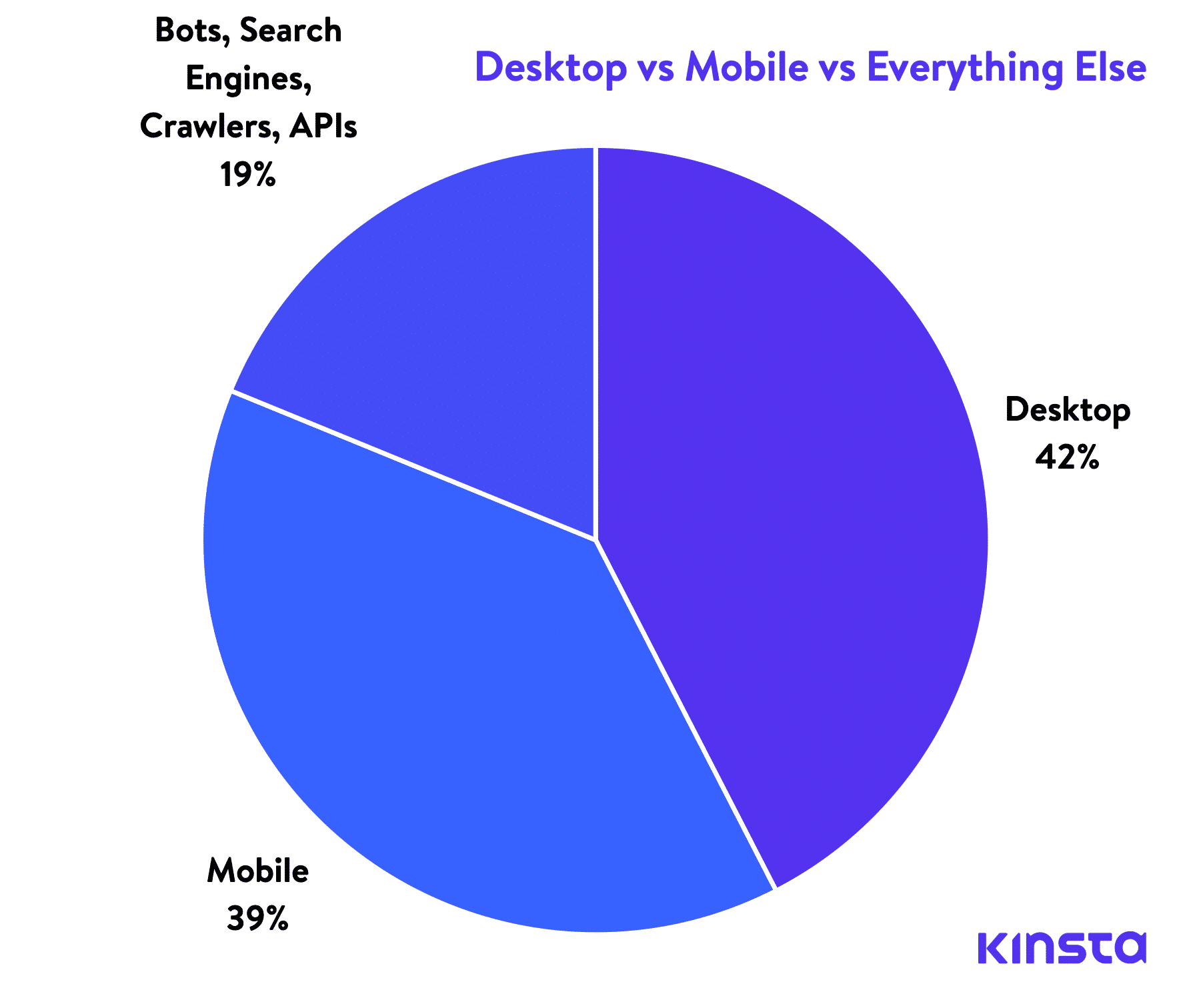
What’s the lesson you should draw here?
Look at the data in Google Analytics and check where exactly your important goals are reached. Don’t neglect your users simply making your SEO rely on some news you read on a few blogs saying that SEO traffic is now all about being mobile.
3. Get an SSL Certificate
SSL (Secure Sockets Layer) certificates are small files installed on a web server which act as a security measure for websites.
Once installed, they will switch your HTTP to HTTPS and activate a padlock symbol in the browser:
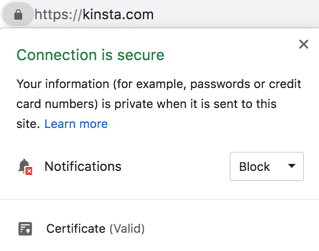
This is a very simplistic overview of how SSL works. What’s important to know for SEO is that having a secure site is in fact a ranking factor.
In fact, studies have shown a positive link between HTTPS and higher rankings:
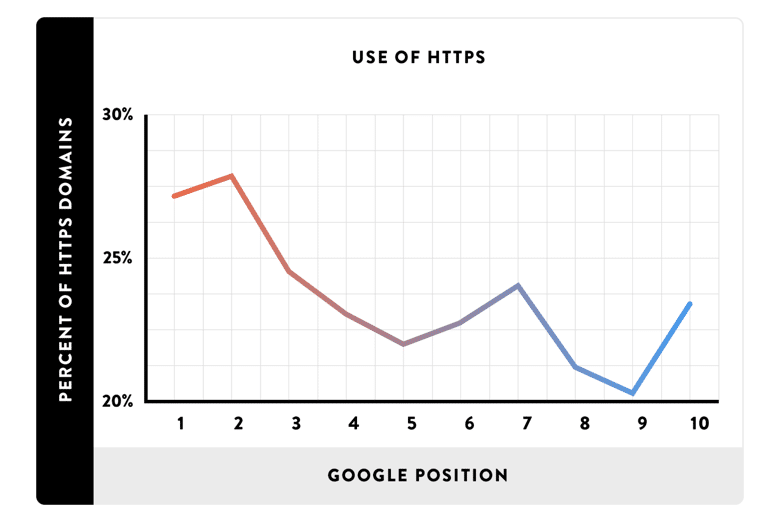
Google, and a variety of other major browsers, had already revealed that they would be deprecating support for TLS 1.0 and TLS 1.1. Specifically, they’ll display ERR_SSL_OBSOLETE_VERSION warning notification indicating a “not secure” connection.
4. Make Sure You Have Fast and Reliable Hosting
Choosing the right (see fast and reliable) web hosting can have a big impact on your SEO.
Have you ever gone to a website that takes ages to load? Be honest, did you wait it out or did you leave?
The load time of your website is an important ranking factor because no one wants to wait for an eternity to load a webpage. Chances are, if you find yourself in a situation like this, you hit the back button and go elsewhere.
Google knows people do this.
Hosting plays a huge part in page loading speed. You need to choose a host that can deliver good speeds if you care about SEO at all.
There’s a couple of factors to think about when choosing hosting. Things like: uptime (and minimizing downtime), having responsive support, security and backups. All these are important considerations to make for the SEO health of your site.
In summary: pick a host that is consistently good.
5. Get Links from Other (Relevant) Sites
A link (or backlink) is an HTML hyperlink pointing from one site to another. These are important factors for SEO.
Studies have shown pages with more (or better) backlinks tend to rank higher than pages with fewer backlinks:
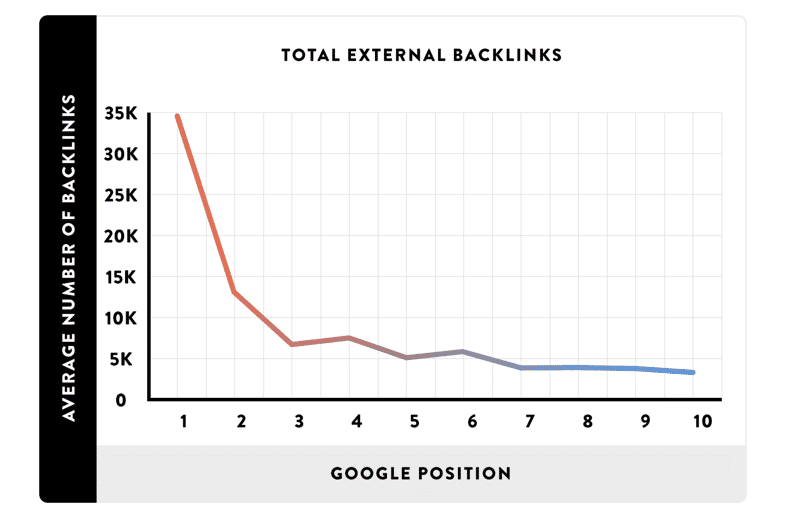
Search engines use links:
- To find new web pages.
- To help decide how pages should rank.
Search engines use these links to crawl the web. They will crawl the links on the pages of your site pointing to the other pages on your site (internal links) and they will crawl links (backlinks) pointing to other sites.
Think of these as votes of confidence from other sites. But not all links are created equal. It’s better to have a few links from good sites that are relevant to yours, than loads of junk and irrelevant links just for the sake of it.
Link building is a big topic in SEO. For the sake of not going off-topic, here are some link building tactics you can do:
- Guest blogging — find sites in your industry, write a post for them and link back to your site.
- Broken link building — find pages with 404ing pages, let the webmaster know and request they point it at your site (if your replacement link/page matches the broken one’s content).
- Unlinked mentions — find where people have talked about you online but not linked to you and simply request a link.
- Steal from your competitors — find the links your competition has… and steal them.
- Content repurposing — turn that blog post into a video and vice versa.
Obviously, there are many more ways to build links. You can get some inspiration from this guide by Ahref.
6. Write Content People Want to Read
You can’t talk about anything SEO-related without touching on the importance of high-quality content.
The phrase ‘content is king’ has been done to death, but the point is important: good content matters.
There’s no secret sauce here either, good content is just content people want to read. Sure, there are some content marketing essentials to keep in mind like budgeting, tools, and promotion, but you can’t get away from having content people want to read.
Surely, there’s more to it than just that though?
Well yes, once you know what to write (thanks to doing some good old fashion keyword research), there are a few things you can do to improve your content for SEO:
- Improve readability — most people skim content on the web, so make sure to break up your content with subheadings and bullet points to make sure people aren’t scared away by a massive wall of text.
- Use images — likewise, include visuals like screenshots, GIFs, and images to enhance your content.
- Go deeper — longer content may not always be the right choice, but when it comes to content length, longer articles are generally more in depth so will rank higher.
- Use facts — if you are stating a fact or using a statistic to illustrate a point, link to a study that supports it.
- Don’t forget about featured snippets — with just a few tweaks to your content, you can get a boost in traffic if you get in the featured snippet.
Creating evergreen content is good. But if you fail to optimize it, you could be leaving valuable rankings on the table.
7. Optimise Your Pages (For Organic Traffic)
Just having content up on your site isn’t enough. You need to optimize it to show up in Google for the desired keywords.
Each page should have a “focus keyword” it is optimized for. This doesn’t mean it can only rank for that, in fact, a page can rank for many terms. But to keep things simple, you want to structure your on-page optimizations around one keyword.
Let’s look at a few key elements of optimization:
Title Tags
Title tags are one of the main ways that Google can understand what your page is about. You want to make sure that the main keyword you want to rank for is in the title tag.
It should also be pointed out that the title tag is not the headline you see on the page. These are often H1 or H2 tags. While they can be similar or contain the same keywords, they are two different elements.
If you are using Chrome as your browser (like 73% of all internet users), there’s a really easy way to see the page title of the current page you are on.
Just hover your mouse over the tab and a small grayed out box will pop up for that page:
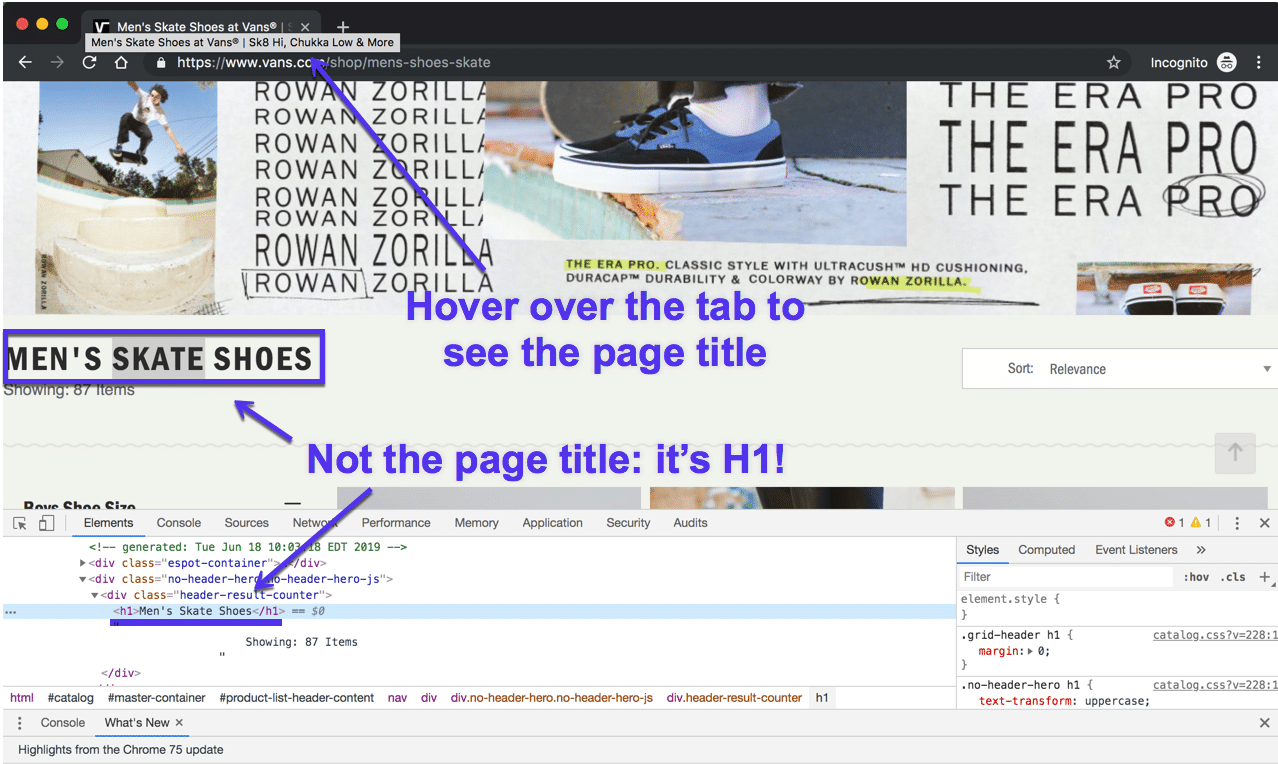
Keep in mind length when writing your title tags. What Google will show varies, but a good rule to aim for is 55-60 characters or 600 pixels.
(Pssst! You can use this handy SERP preview tool to make sure your title tags aren’t too long.)
You want to get your main keyword in the title, but in a natural way. Your title tag is often the first thing people will see in the results page for searching a keyword. So make a good impression and make them want to click through and read more on your site.
Meta Description
If the title tag is your page’s headline, the meta description is the one-line summary enticing people to read on.
Meta descriptions are another HTML element that cannot be seen on your actual pages. Here’s an example of one in the wild:

Sometimes, Google chooses not to display your meta description and will generate its own for you. But that doesn’t mean you should not bother writing them.
Writing a good meta description can help you get people to click through and actually visit your website. Remember: showing up in the SERPs is just the first step. You still need to get them to visit your site.
URL
When it comes to SEO, there are two main things to keep in mind with URLs:
- Rankings — URLs are a small ranking factor. So, ideally, you want to put the main keyword you want to rank for in the URL.
- User experience — A good URL should be easy to understand for both search engines and real people. Consider this: can you tell what the page is roughly about by just the URL alone?
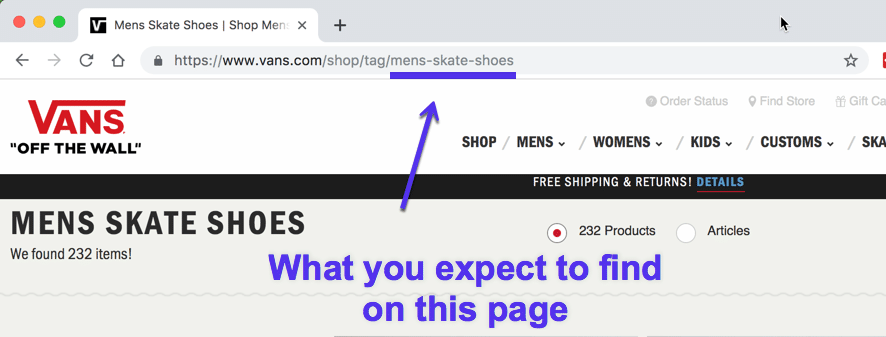
Just by looking at this URL, we can tell the page is probably about men’s skate shoes.
Want to learn how to use SEO to grow your website traffic? Check out our video:
Now What? (Summary)
Well, now you know what SEO stands for, how it works, and how you can take advantage of it to grow your website.
Let’s quickly run through what you need to do in order to rank your site:
- Use a search engine friendly CMS (like WordPress).
- Make sure your site works on mobile (aka responsive design).
- Get an SSL certificate.
- Make sure you have fast and reliable hosting.
- Get links from other (relevant) sites.
- Write content people want to read.
- Optimize your pages (for organic traffic).
Now all that’s left to do is get optimizing your site. Getting Google to send you traffic is an ongoing process, not a one-time thing.
SEO is a marathon, not a sprint.
Read our SEO Tips guide to find out more about how you can optimize your website for the search engines.



Thanks Mateo!
You’re welcome, Jim!
Glad to help :)
Such a great article I have ever seen. Everyone should follow your thoughts. I really appreciate it.
Thanks, Manazir!
This is a great piece of article. Your visualization of SEO is clear to the reader, especially to the beginner. Thanks for sharing!
Thank you Samantha,
glad you found it useful!
This is a great post for a beginner and it talks a lot about SEO along with some basic terms like CTR – click-through rate, CTA – call to action, CRO – conversion rate optimization, UX – user experience. Thanks for this valuable content.
this is amazing, i cant believe that you wrote all this for free and even added pictures for us. thank you so much!!!! this is genuinely one of the most useful things ive read in awhile.
Optimize for Rich & Featured Snippets
With zero-click searches being so prevalent, the information shown on the SERP becomes important. Rich snippets show, in addition to title and description, images, ratings, prices, etc. are easier to get but doesn’t affect your CTR. Featured snippets, on the other hand, display an entire block of information at the top of a SERP. It is difficult to get but greatly increases your CTR.
Great post! Thanks for breaking down SEO in such an easy-to-understand way. The beginner’s tips are super helpful, especially the emphasis on quality content and mobile optimization. Looking forward to applying these strategies to my site!